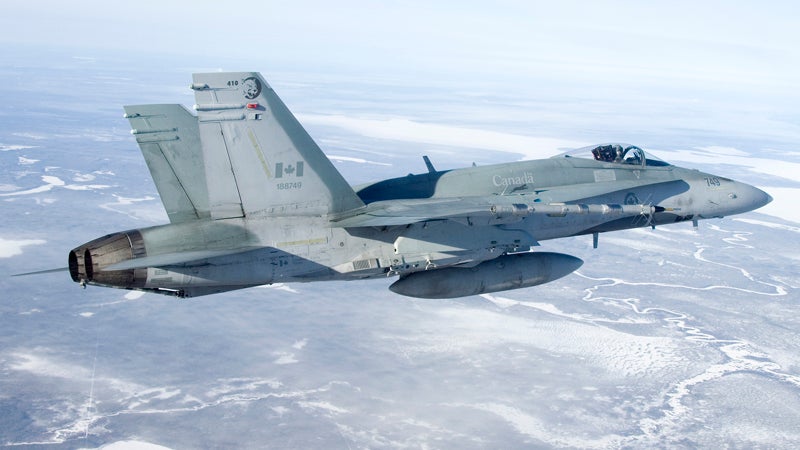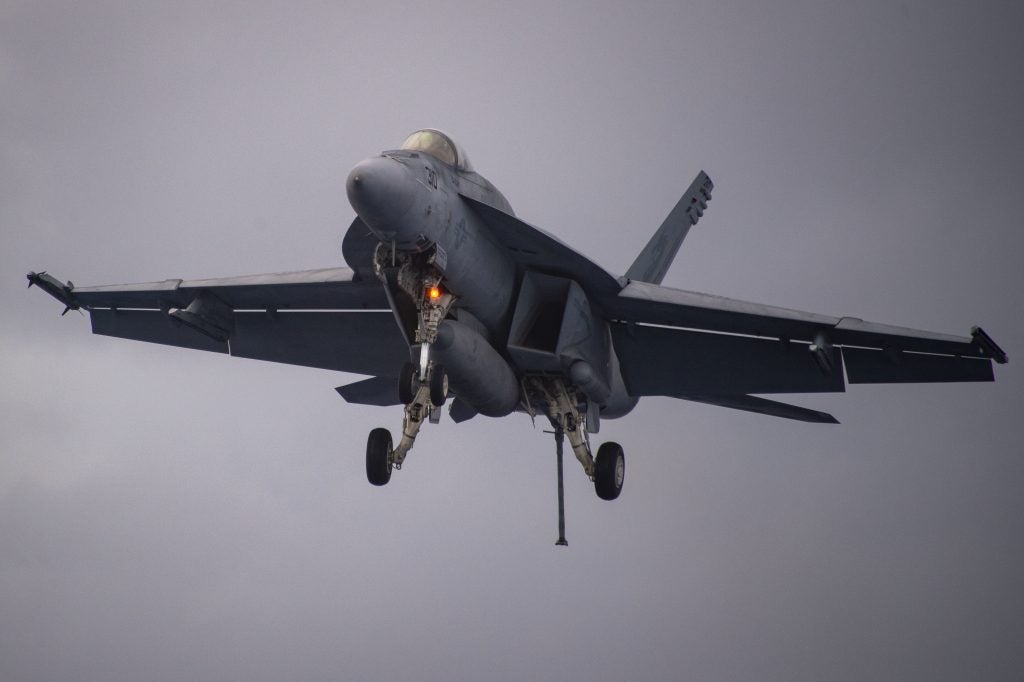Report: Super Hornet Out Of Contention For Canadian Hornet Replacement
The Canadian federal government is reported to have informed Boeing that its bid to replace the Royal Canadian Air Force’s CF-18s with Super Hornets has failed to meet program requirements.
Three sources from industry and government that spoke to the Canadian Press on condition of anonymity said that the Super Hornet manufacturer was informed on Wednesday that it was now out of contention for the CA$19 billion CF-18 replacement program. The remaining two contenders, Lockheed Martin and Saab, were told at the same time that their bids with the F-35 and Gripen E respectively had met the requirements.
However, a Boeing spokesperson contacted by the Canadian Press said that the company had yet to be officially notified by the federal government that it was now out of the program, and the company would reserve comment before receiving the notification.
The Super Hornet dropping out of the running while the Gripen E remains is surprising, owing to the Super Hornet and F-35 already meeting “Two Eyes” intelligence sharing and NORAD interoperability requirements critical to RCAF operations, while the Gripen E currently does not (although Saab claims it can be made compatible). Dassault’s Rafale and Airbus’ Eurofighter had both been previously withdrawn from the competition, with both manufacturers claiming that modifying aircraft systems to meet the requirements would cost too much for their offerings to remain competitive.

The Super Hornet’s apparent departure also marks yet another unceremonious end to a bid to replace the CF-18s with Boeing’s successor to the Hornet. Justin Trudeau’s then newly-elected government had originally attempted to sole source a purchase of 18 Super Hornets in 2016 following an election promise to cancel the RCAF F-35 procurement greenlighted by the preceding government. Ottawa soon experienced sticker shock upon discovering that the Foreign Military Sales cost of 18 Super Hornets sold through the US government was double that of figures quoted in private briefings by Boeing, with the total cost of CA$6 billion being two thirds of the original projected cost of the original 65-airframe F-35 purchase.
However, the issue was soon overshadowed in the public eye by Boeing’s trade dispute against Bombardier’s C-Series airliner in the summer of that year. While tariffs imposed by US courts on the airliner were subsequently overturned, Bombardier had by then sold off the C-Series to Airbus for 1 Canadian dollar, effectively exiting the commercial aviation sector.
The Trudeau government relaunched the CF-18 replacement program in 2019, with industrial benefits for Canada, cost and performance all factors in the program, which aims to make a final selection in early 2022. While Saab has touted that a potential win for the Gripen E would result in an aircraft built and maintained in Canada, Canadian industry already is heavily involved in the F-35 program thanks to Canada’s status as a Level 3 F-35 partner since 1997, with Lockheed Martin saying that Canadian companies have been awarded contracts totaling $2 billion to date as part of the F-35 global supply chain.
In the meantime, the CF-18 fleet has been augmented by Hornets recently retired by the Royal Australian Air Force, with the RCAF fleet now receiving active electronically scanned array radars as part of upgrades that will hopefully keep them combat relevant until they can finally retire.

